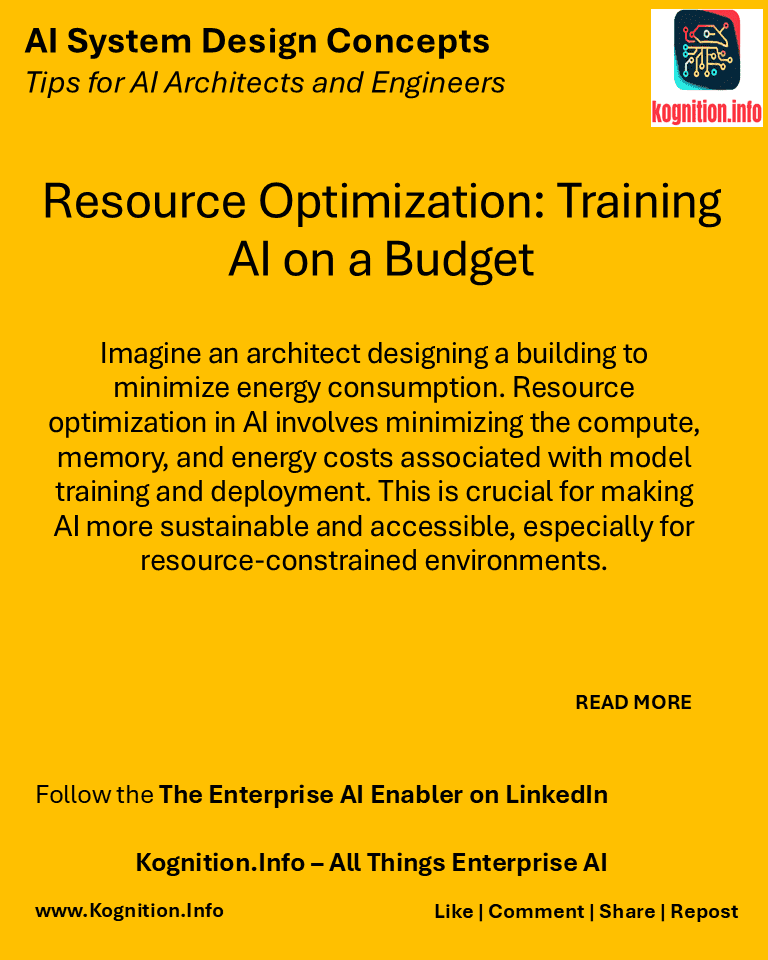
Imagine an architect designing a building to minimize energy consumption. Resource optimization in AI involves minimizing the compute, memory, and energy costs associated with model training and deployment. This is crucial for making AI more sustainable and accessible, especially for resource-constrained environments.
Use cases:
- Reducing carbon footprint: Minimizing the environmental impact of AI by reducing energy consumption during training.
- Enabling edge AI: Optimizing models to run efficiently on edge devices with limited processing power and memory.
- Making AI more affordable: Lowering the cost of AI development and deployment, making it more accessible to researchers and smaller organizations.
How?
- Choose efficient algorithms: Select algorithms that are computationally efficient and require less memory.
- Optimize model architecture: Design model architectures that are compact and require fewer parameters.
- Leverage hardware acceleration: Utilize GPUs, TPUs, or other specialized hardware to accelerate training and inference.
- Reduce data movement: Minimize data transfer between memory and storage to reduce energy consumption.
- Employ cloud resources strategically: Choose cloud instances and pricing models that optimize cost and performance.
Benefits:
- Reduced environmental impact: Minimizes the carbon footprint of AI development and deployment.
- Increased accessibility: Makes AI more accessible to resource-constrained environments and organizations.
- Cost savings: Lowers the cost of AI development and deployment.
Potential pitfalls:
- Trade-offs with accuracy: Some optimization techniques may slightly reduce model accuracy.
- Complexity: Implementing resource optimization strategies can require specialized knowledge and tools.
- Hardware limitations: Some optimization techniques may be limited by the available hardware.
